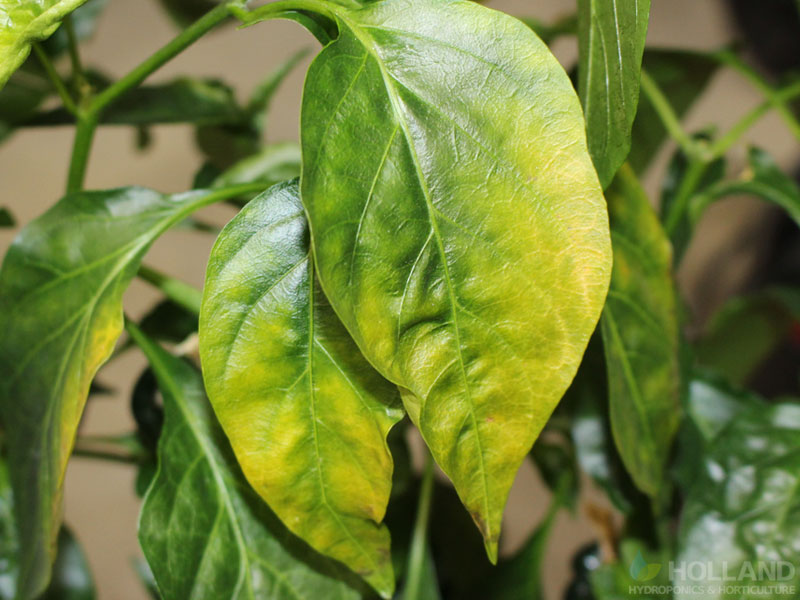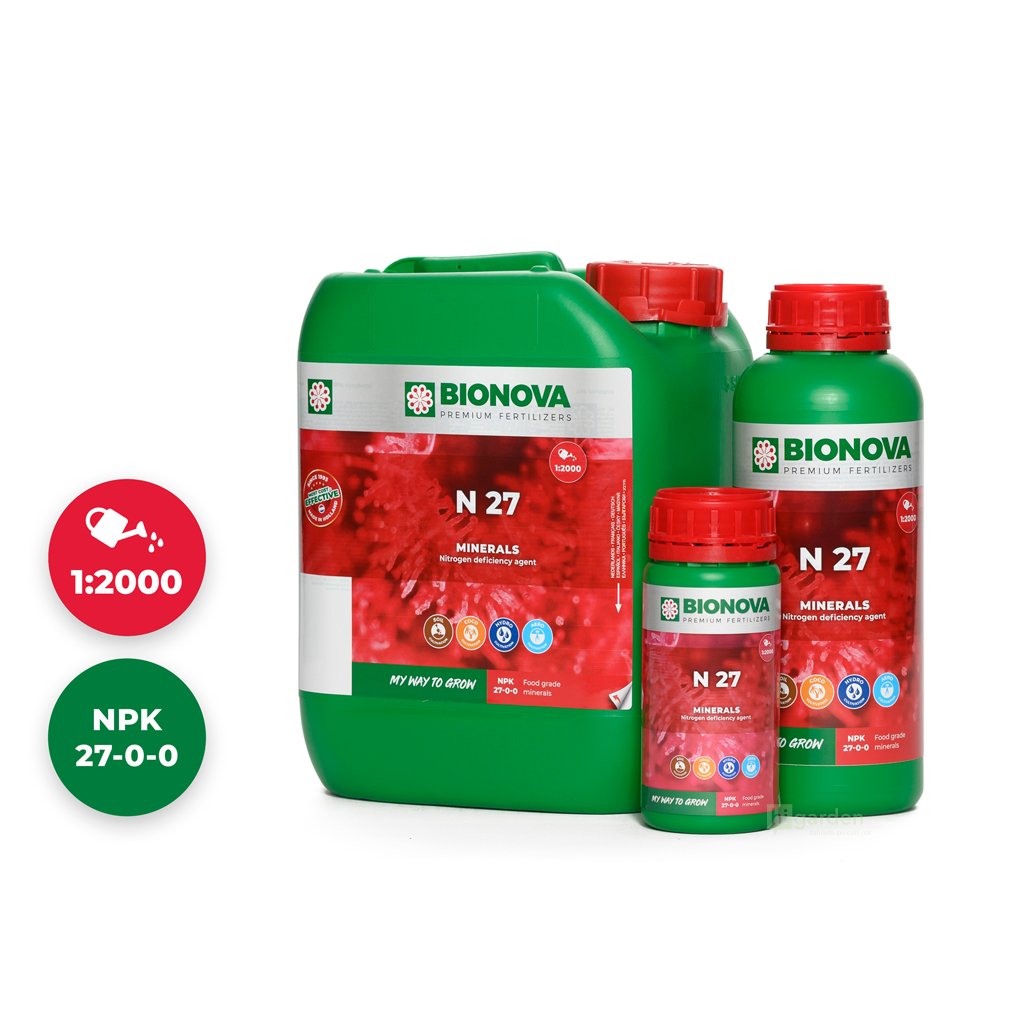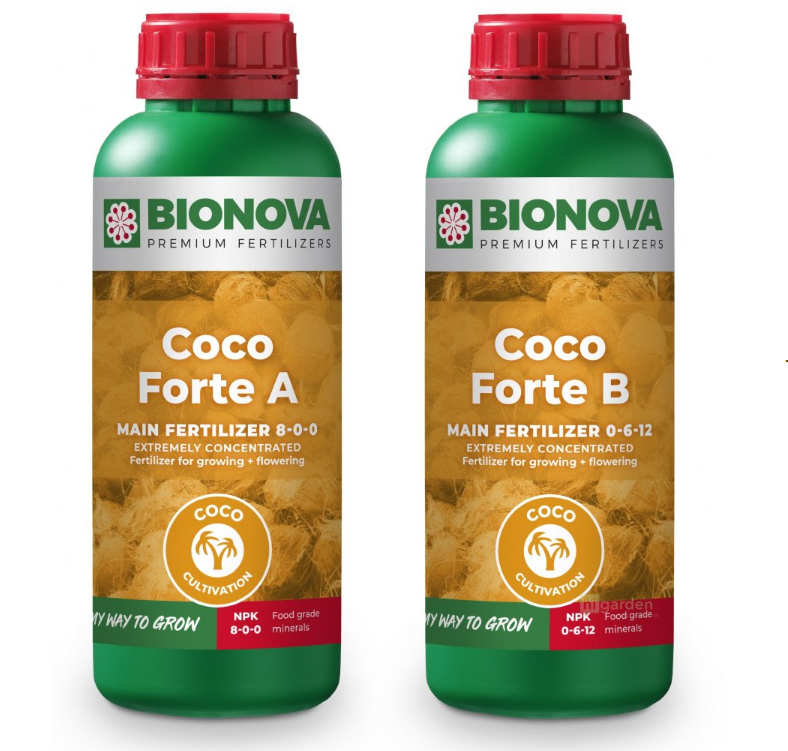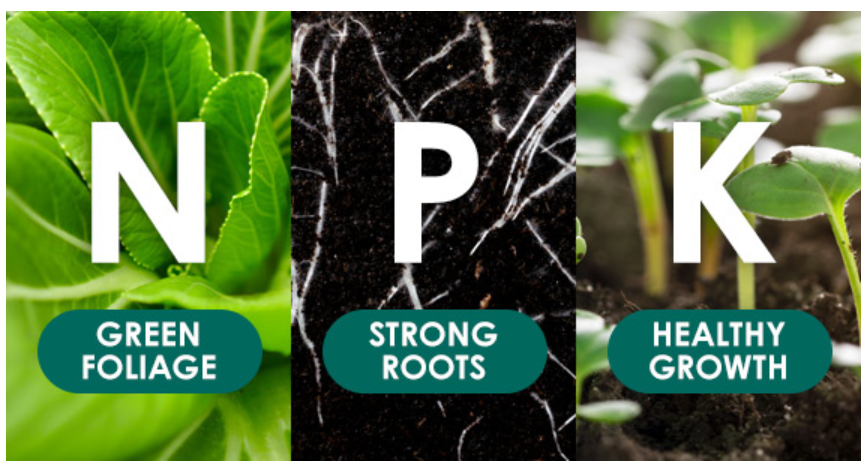If your plants have a nitrogen deficiency, they grow slowly and start to turn yellow or faint yellow. However, there are several possible causes for yellowing (stagnant water, soil-bourne diseases or Tylenchida, to name a few).

So how do we know when we are actually dealing with a nitrogen deficiency?
First, the older leaves are turning yellow-green from the top down. In time, the yellowing spreads to the bottom parts of the leaves and starts spreading into the venation, and when it does, the plants stop growing, and the affected leaves fall off.
Another sign of nitrogen deficiency is a purple or reddish stalk.
Why does it happen?
If plants can’t absorb enough nitrogen through the roots (for any reason), leaves start losing the chlorophyll vital for photosynthesis. The plant takes nitrogen from the old leaves and transports it into young leaves and other places where it’s necessary for growth. In time, the plant uses all the available nitrogen, stops growing, and the leaves fall off. Some plants, like cabbage, turn purple instead of yellow.
Plants with a nutrient deficiency have much smaller fruit or vegetables than they otherwise would. They’re also more susceptible to damage from diseases and pests.
What causes nitrogen deficiency?
The deficiency can have several causes:
- Excess potassium, zinc or manganese in the substrate.
- Too many chlorides in the soil.
- The substrate doesn’t contain enough nitrogen - it’s easily soluble in water and washes away easily.
- The pH in the root zone is too high.
- Dysfunction of the root system caused by damage, disease or low temperatures in the substrate
How to prevent nitrogen deficiency?
The deficiency usually isn’t apparent immediately, and you have to wait for it to fully manifest. Plants are more prone to deficiencies during times of intense stress or growth. It’s certainly a good idea to pay attention to the fertiliser you’re using. High-quality fertilisers contain more than enough nitrogen to supply the appropriate nutrition a plant needs for the entire growth cycle.
Basic NPK fertilisers lower the probability of most detrimental deficiencies because they contain all the fundamental nutrients (nitrogen (N), phosphorus (P) and potassium (K). Keep in mind that abiotic factors (like temperature, light intensity, acidity, humidity and wind strength) can considerably affect nutrient deficiencies.
How to deal with a deficiency? 
If you notice yellowing leaves on the plant, you can address the situation by applying fertiliser with a high nitrogen concentration. You can add it to irrigation or use a foliar spray.
What is the function of nitrogen in a plant?
Nitrogen is vital for a plant. It uses it to produce chlorophyll, necessary for photosynthesis. It’s also part of the amino acids plants use to produce proteins they need for every metabolic process. In general, we can say that nitrogen supports plant growth, makes leaves greener, improves the quality of the fruit, and increases the volume of the yields.
We recommend these products:
More articles:


.jpg)




